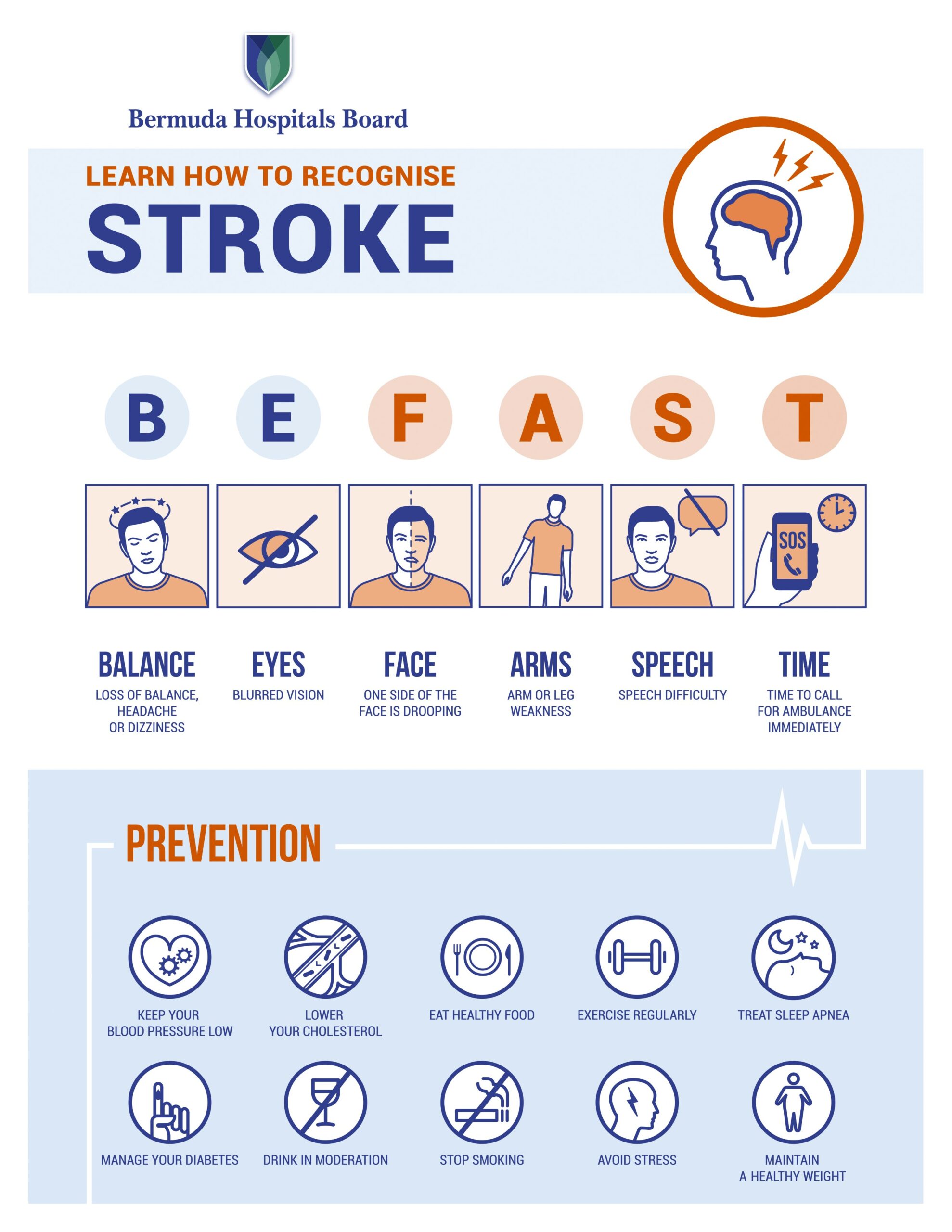ACTING QUICKLY CAN HELP REDUCE DAMAGE AND IMPROVE RECOVERY
by MELISSA FOX
It can start with weakness in your arm, or maybe you’ll find it difficult to talk all of a sudden. Could you be having a stroke? It’s not time to guess, it’s time to act. If you want to be prepared, you need to B.E. F.A.S.T.

An acronym used by the Primary Stroke Centre at KEMH, B.E.F.A.S.T. stands for:
BALANCE: a stroke can cause weakness on one side of the body or vertigo, a sensation characterized by the feeling that everything around you is moving or spinning.
EYES: you may experience painless change in one or both eyes, such as blurred or double vision.
FACE: facial paralysis on one side of the face can occur when nerves that control the muscles in the face are damaged in the brain.
ARMS: damaged nerve cells in the brain can affect the sensory receptors in the limbs, leading to a feeling of numbness, particularly on one side of the body. You may have difficulty lifting one arm to its full height.
SPEECH: when stroke affects the language center of the brain, the result can be slurred speech or difficulty speaking.
TIME: Call 911 immediately. The longer a stroke goes untreated, the more damage can be done to the brain. If possible, make an effort to note the time of the onset of the symptoms.
What you can do for someone having a stroke
The symptoms of stroke can make it difficult for someone experiencing it to act on their own behalf. In this event, here’s what you can do.
Call 911. We know the sooner the patient gets into care, the faster they will be able to recover.
Note down the time of the onset of the first symptom. Medications like tissue plasminogen activator can be given to someone while they’re experiencing a stroke, and can potentially reverse or stop symptoms from developing but they must be administered within four and half hours of the start of symptoms. If addressed in time, patients may also be candidates for other treatments that can help remove clots or fix aneurysms (a bulge in a blood vessel caused by weakness in the blood vessel wall), but must be performed within 24 hours of the first onset of symptoms.
When warning signs of stroke disappear as quickly as they began, it may be attributed to a TIA, or transient ischemic attack: a temporary period of symptoms similar to those of a stroke. These typically last for only a few minutes and often cause no permanent damage, but may be an indication of what’s to come.
Don’t offer medication – the cause of a stroke cannot be determined without a CAT scan and some medicines have been known to make strokes worse. It’s best to avoid them altogether. Don’t offer food to a person experiencing a stroke, as they may have difficulty swallowing.
Don’t allow a person experiencing symptoms of a stroke to drive, even if it’s to the hospital. Stroke symptoms can severely impair the ability to drive safely.
Health, heredity, and lifestyle can all factor into whether you will suffer a stroke, but practicing preventative measures, like attention to your diet, exercise, and regular visits to your GP, may help lessen your chances.
If you believe you or someone you know is having a stroke, don’t sleep on it or shrug it off. Call 911. The faster a patient has access to medical care, the better their chances of recovery. Stroke can affect anyone at any point in their life. Knowing the signs – B.E.F.A.S.T. – can help you save a life.

